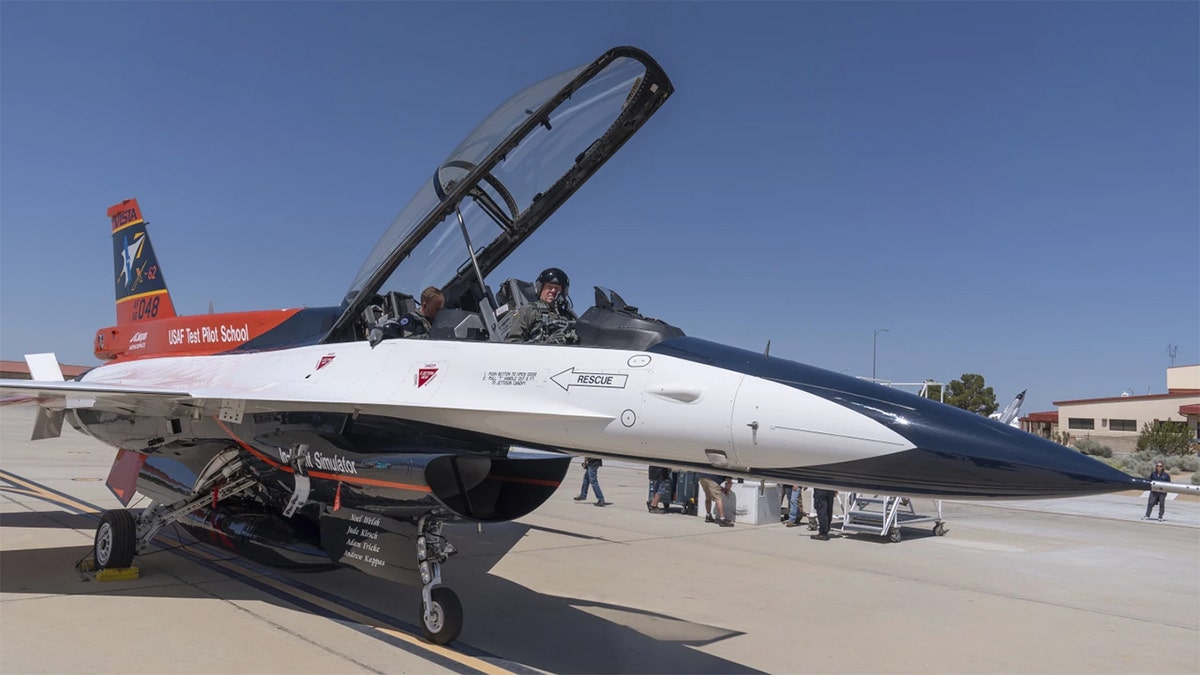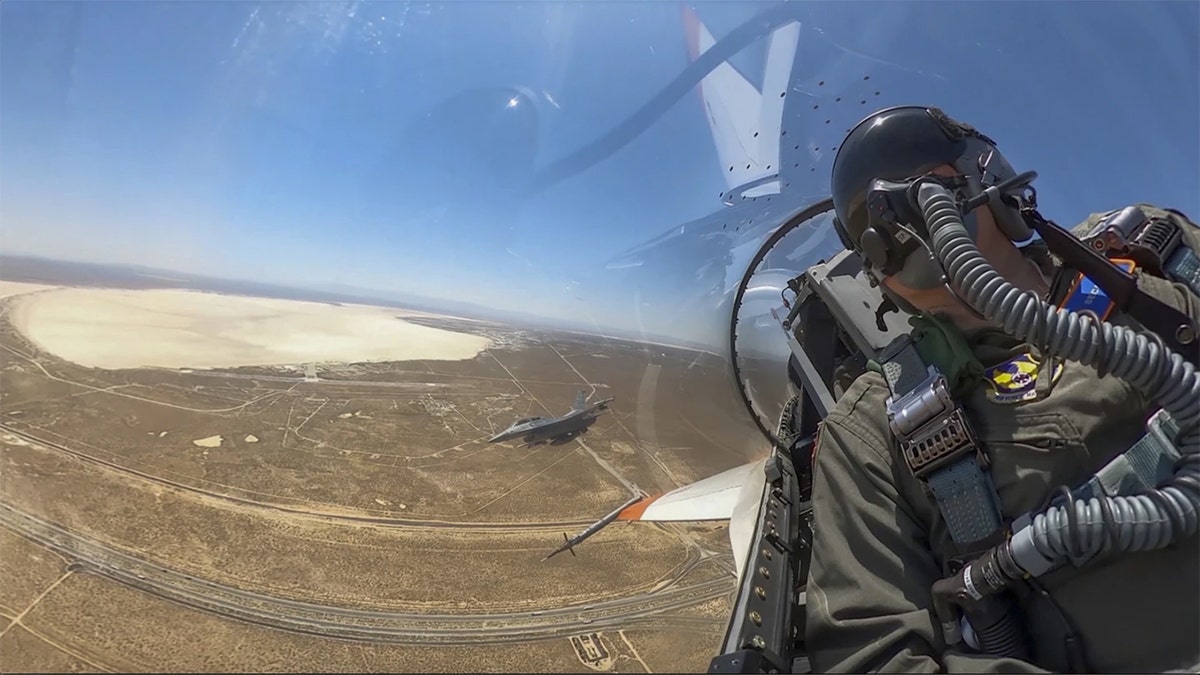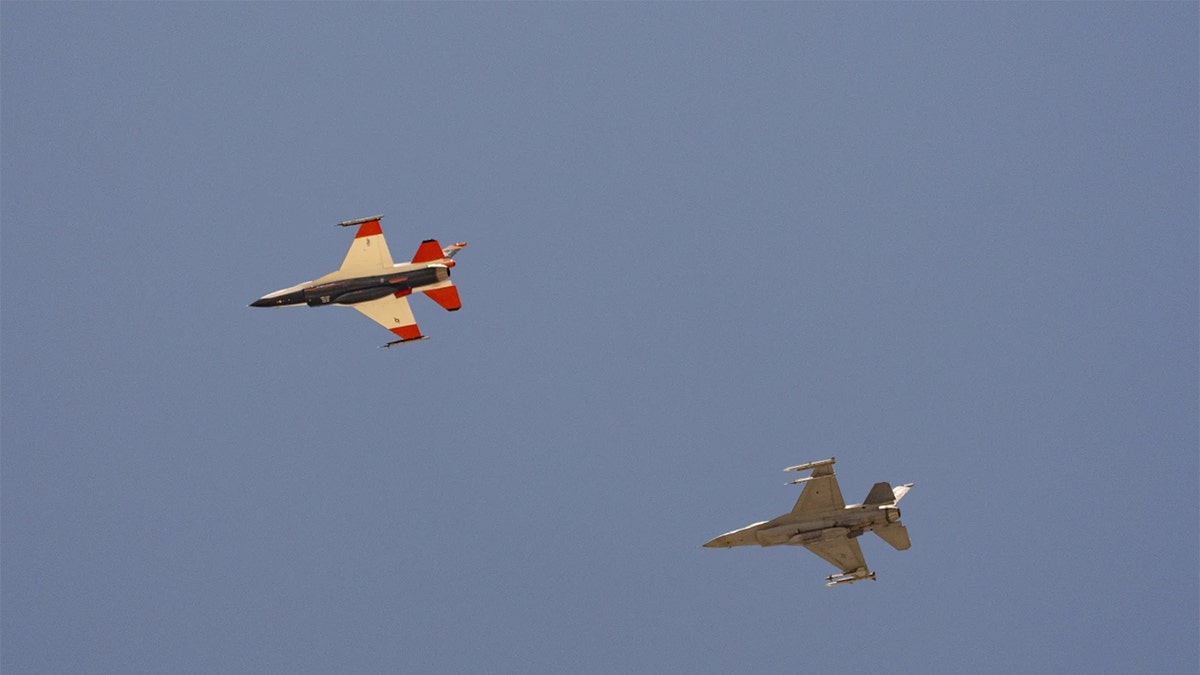U.S. Air Force Secretary Frank Kendall rode in the cockpit of a fighter jet on Friday, which flew over the desert in California and was controlled by artificial intelligence.
Last month, Kendall announced his plans to fly in an AI-controlled F-16 to the U.S. Senate Appropriations Committee’s defense panel, while speaking about the future of air warfare being dependent on autonomously operated drones.
On Friday, the senior Air Force leader followed through with his plans, making what could be one of the biggest advances in military aviation since stealth planes were introduced in the early 1990s.
Kendall flew to Edwards Air Force Base – the same desert facility where Chuck Yeager broke the sound barrier – to watch and experience AI flight in real time.
US MILITARY ‘OUT OF TIME’ IN PUSH AGAINST ADVERSARIES’ MODERNIZATION, AIR FORCE SECRETARY SAYS
After the flight, Kendall spoke with the Associated Press about the technology and the role it will play in air combat.
“It’s a security risk not to have it. At this point, we have to have it,” the secretary said.
The Associated Press and NBC were granted permission to watch the secret flight with the agreement that neither would report on the matter until the flight was complete, due to security concerns.
AIR FORCE SECRETARY PLANS TO RIDE IN AI-OPERATED F-16 FIGHTER AIRCRAFT THIS SPRING

The F-16 controlled by AI is called Vista, and it flew Kendall in maneuvers reaching over 550 mph, putting pressure on his body of nearly five times the force of gravity.
Flying alongside Vista and Kendall was a human-piloted F-16, and the two jets raced within 1,000 feet of each other performing twists and loops, in an effort to force their opponent into a place of submission.
Kendall grinned as he climbed out of the cockpit after the hour-long flight, saying he saw enough to trust the AI technology in deciding whether to fire weapons during a war.
PENTAGON SEEKS LOW-COST AI DRONES TO BOLSTER AIR FORCE: HERE ARE THE COMPANIES COMPETING FOR THE OPPORTUNITY

Many oppose the idea of computers making that decision, fearing AI may one day be able to drop bombs on people without consulting with humans.
The same people who oppose AI-powered war machines are also seeking greater restrictions on its use.
One of the groups seeking stronger restrictions is the International Committee of the Red Cross.
“There are widespread and serious concerns about ceding life-and-death decisions to sensors and software,” the group warned, adding the autonomous weapons “are an immediate cause of concern and demand an urgent, international political response.”
EUROPE SEEKS TO BECOME ‘GLOBAL REFERENCE POINT’ WITH AI OFFICE

Still, Kendall says human oversight will always be at play when weapons are considered.
The Air Force is planning to have an AI-enabled fleet of over 1,000 AI-operated drones, with the first being in operation by 2028.
In March, the Pentagon said it was looking to develop new artificial intelligence-guided planes, offering two contracts for several private companies to compete against each other to obtain.
The Collaborative Combat Aircraft (CCA) project is part of a $6 billion program that will add at least 1,000 new drones to the Air Force. The drones will be designed to deploy alongside human-piloted jets and provide cover for them, acting as escorts with full weapons capabilities. The drones could also act as scouts or communications hubs, according to a report from The Wall Street Journal.
WHAT IS ARTIFICIAL INTELLIGENCE (AI)?

The companies bidding for the contract include Boeing, Lockheed Martin, Northrop Grumman, General Atomics and Anduril Industries.
Cost-cutting is one of the elements of AI that appeals to the Pentagon for pursuing the project.
In August 2023, Deputy Secretary of Defense Kathleen Hicks said deploying AI-enabled autonomous vehicles would provide “small, smart, cheap and many” expendable units to the U.S. military, helping overhaul the “too-slow shift of U.S. military innovation.”
But the idea is to not fall too far behind China, which has modernized its air defense systems, which are much more sophisticated and put manned planes at risk when they get too close.
Drones have the potential of interrupting such defense systems and could be used to jam them or provide surveillance for crews.
The Associated Press contributed to this report.
Read the full article here

